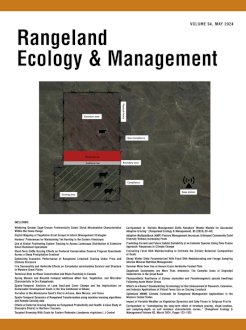Black greasewood (Sarcobatus vermiculatus Hook., Torr) is a native halophytic, resprouting shrub found on saline rangeland soils in the western United States, including the western Great Plains grasslands. Stands can become dense, with limited native herbaceous biomass, and are prone to invasion by exotic species. We tested fall and spring prescribed fire compared with nonburned controls in a degraded rangeland site near Miles City, Montana, and a healthy rangeland site near Laramie, Wyoming to determine effects on greasewood shrub survival, density, and canopy structure. We additionally tested fuel load, time since fire, fire seasonality and prefire measurement effects on postfire greasewood canopy structure. In a second experiment at the Montana site only, nontreated controls, fall fire, 2,4-D, and 2,4-D preceded by fire were tested for effects on herbaceous biomass and greasewood survival, density, and canopy structure. Fire did not affect greasewood survival, but fire in either season reduced canopy volume by 52% across two growing seasons and models projected four or five growing seasons for structural recovery. Fine fuel load was negatively related to greasewood density and canopy structure. Herbicide reduced greasewood survival by 55%, and fire plus herbicide reduced survival by 30%. No treatment effects were detected for herbaceous biomass at the degraded site. Prescribed fire can reduce greasewood canopy structure for multiple years without killing the shrubs. Herbicide is more effective than fire if the objective is to reduce greasewood density, but multiple applications may be required. While 2,4-D herbicide was less effective when applied to resprouts after fire, results may improve with later postfire application. Although 2,4-D provided the greatest reduction of greasewood, skeletons of dead shrubs remained. Following herbicide treatment with fire could be a treatment combination to strategically reduce greasewood influence because fire would remove skeletons and further reduce canopy structure.
How to translate text using browser tools
17 May 2024
Fire Seasonality and Herbicide Effects on Sarcobatus vermiculatus Survival and Structure in Western Great Plains
Nathan M. Wade,
Lance T. Vermeire,
J. Derek Scasta
ACCESS THE FULL ARTICLE

Rangeland Ecology and Management
Vol. 94 • No. 1
May 2024
Vol. 94 • No. 1
May 2024
controlled burn
fire ecology
greasewood
herbicide
resprouting
woody shrub encroachment




